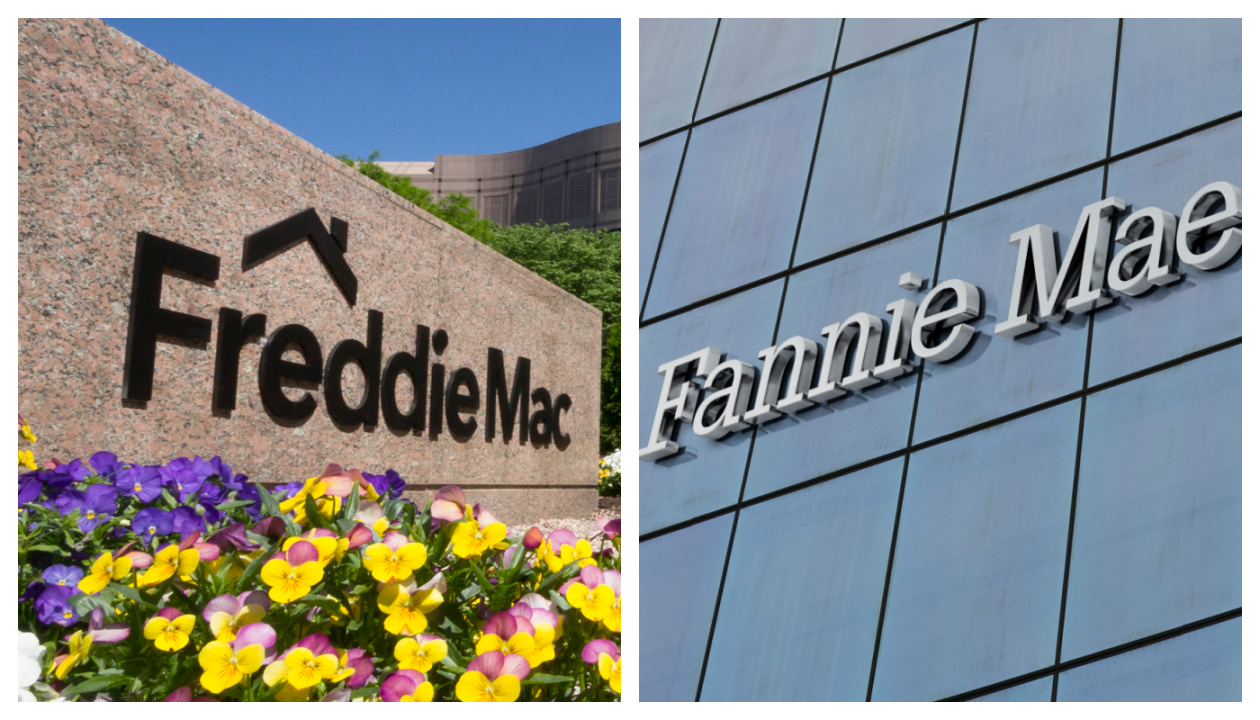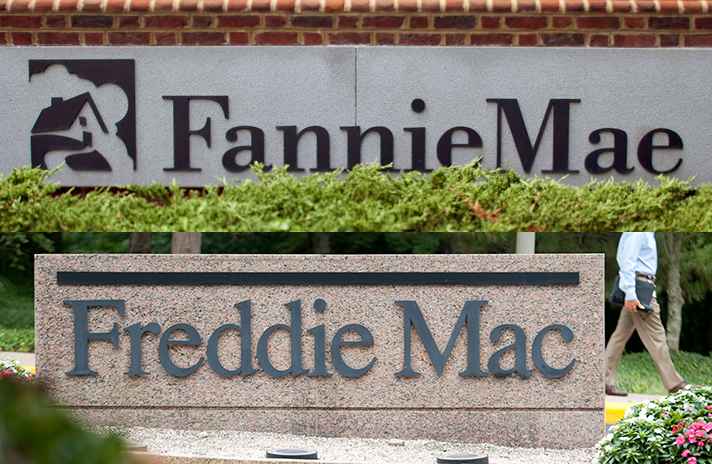Fannie Mae And Freddie Mac are the federally backed Mortgage companies that are created by U.S. Congress. Fannie Mae And Freddie Mac are financial fuels that guarantee most of the mortgages made in the United States of America, together they are also known as government-sponsored enterprises (GSEs). Fannie Mae And Freddie Mac are the federally backed institutions that provide liquidity, stability, and affordability to the mortgage market by offering ready access to funds and guarantees to thousands of banks, savings and loans, and mortgage companies across the country.
Fannie Mae And Freddie Mac buy mortgages from lenders and either hold these mortgages in their portfolios or package the loans into mortgage-backed securities (MBS) that may be sold. Mortgage Lenders use the cash raised by selling mortgages to the Enterprises to engage in further lending. The enterprise purchase helps ensure that individuals and families that buy homes and investors that purchase apartment buildings and other multifamily dwellings have a continuous, stable supply of Mortgage Money.
Loan Guarantee from Fannie Mae And Freddie Mac reduce the risk for mortgage lenders who make loans and investors who might purchase them. This makes loans more affordable and contributes to the availability of 30-years-fixed rate loans. Loans that are not eligible for Fannie Mae And Freddie Mac guarantees are typically more expensive. Loans Guaranteed by government-sponsored enterprises (GSE) are known as conventional mortgage loans. Fannie Mae And Freddie Mac also can help stabilize the mortgage market and protect housing during extraordinary periods when stress and turmoil in the border financial system threaten the economy.
What Are Fannie Mae And Freddie Mac?
Fannie Mae And Freddie Mac are the government-sponsored enterprises (GSEs). They were created by Congress and function on the government’s behalf to provide liquidity, stability, and affordability to the mortgage market, says the Federal Housing Finance Agency, which oversees Fannie Mae And Freddie Mac. These GSEs are privately owned but they get support from the Federal Government. Fannie Mae And Freddie Mac play the most significant role in the Mortgage Market by owning or Guaranteeing many home loans in the United States of America. The Fannie Mae comes from the Federal National Mortgage Association (FNMA), however, the Freddie Mac comes from the Federal Home Loan Mortgage Corporation (FHLMC).
History of Fannie Mae
Fannie Mae was created in 1939 to combat the lack of affordable housing during the great depression. Fannie Mae helped provide continuous and steady funding for housing and introduced new types of mortgage to the market such as the long-term, fixed-rate mortgage loan, with an option to refinance at any time. In 1954, Fannie Mae adopted a private-public mixed-ownership hybrid structure under the Federal National Mortgage Association Charter Act. For years, Fannie Mae was the primary buyer and seller of federally backed mortgages in the country until it was privatized by the United States government in 1968, making it a shareholder-owned company funded entirely with private capital. After two years, Fannie Mae was approved to buy the conventional mortgage in addition to the Federal Housing Administration (FHA) Mortgage Loans and Department of Veterans Affairs (VA) Mortgage Loans. The Fannie Mae also became even less popular in 1970 when Congress created Fannie Mae to compete with Fannie Mae.
History of Freddie Mac
Freddie Mac is the unofficial name of the Federal Home Loan Mortgage Corporation. Freddie Mac was established in 1970 under the Emergency Home Finance Act to expand the Secondary Mortgage Market and reduce the interest rate risk for the banks. In 1989, Freddie Mac was recognized and turned into a shareholder-owned company as part of the Finance Institution Reform, Recovery, and Enforcement Act (FIRREA). By playing a key role in the Mortgage Loan Market, Freddie Mac has experienced causing and responding to recent national crises. Freddie Mac buys its loans from smaller banks such as thrift banks, that focus on providing banking services to the communities.

What Do Fannie Mae And Freddie Mac Do?
Fannie Mae And Freddie Mac buy about 70% of the Mortgage Loans that the mortgage Lenders make according to the National Association of Realtors. This provides the mortgage lenders with the capital to make more loans. Because Lenders want to sell their loans to the GSEs, they structure mortgages to the Fannie Mae And Freddie Mac Standards. Fannie Mae And Freddie Mac established secondary market facilities for the residential mortgage and provided that the operation thereof shall be financed by the private capital to the maximum extent feasible. Fannie Mae has one additional responsibility according to its charter to manage and liquidate federally-owned mortgage portfolios to minimize any adverse effects on the residential mortgage market and minimize losses to the Federal Government.
What Are the Functions of Fannie Mae And Freddie Mac?
The Fannie Mae And Freddie Mac serve mortgage markets and provide liquidity to Mortgage Lenders by purchasing Mortgages from lenders and then repackaging those mortgages into mortgage-backed securities for sale to investors on the Secondary Mortgage Market.
- Allows New Loans To be Written: Fannie Mae And Freddie Mac’s practice of purchasing Mortgage Loans is beneficial to the Mortgage markets for two main reasons. first, the purchase made by each enterprise helps ensure that home buyers and investors who purchase property have a steady and stable supply of mortgage money.
- Benefits to the Secondary Mortgage Market: Fannie Mae And Freddie Mac expand the pool of funds available for housing by attracting new secondary market investors by providing packaged mortgage-backed securities and guaranteeing the timely payment of principal and interest on the underlying mortgages.
How To Qualify For Loan Approved by Fannie Mae And Freddie Mac?
The Fannie Mae And Freddie Mac’s home loan guidelines are nearly identical and establish some of the basic terms of mortgage loans including debt-to-income ratio (DTI) and required down payments. Generally, Conventional Mortgages that meet the Fannie Mae And Freddie Mac Standards require a minimum credit score of 620. Making a Down Payment of at least 20% will let the homeowners avoid Mortgage Insurance, but it is possible to get a Conventional Mortgage with a Down Payment as low as 3%. Mortgages also must be below the Conforming Loan limit to meet Fannie Mae And Freddie Mac Guidelines, which is typically $726,200, except in high-cost areas. Borrowers who need larger loans can shop for the Jumbo Mortgage Loans.
Frequently Asked Questions (FAQs)
Question 1: What Is the Secondary Mortgage Market?
Answer: A Borrower typically gets mortgage loans from banks or the Mortgage Company. But in most cases, the original lender won’t hold on to the Loan. Mortgage lenders usually sell the loans they originate to other banks or investors like Fannie Mae And Freddie Mac on what’s called the Secondary Mortgage Market.
Question 2: What Are the Similarities between Fannie Mae And Freddie Mac?
Answer: Fannie Mae And Freddie Mac are similar in that support the Mortgage in the U.S. by purchasing Mortgage Loans from lenders that originate them. The Federal Housing Finance Agency (FHFA) regulates both Fannie Mae And Freddie Mac.
Question 3: Why Do Mortgage Lenders Like Fannie Mae And Freddie Mac?
Answer: Fannie Mae And Freddie Mac continuously purchase mortgages from banks and mortgage companies. The mortgage lenders have a steady cash source to keep making loans to new borrowers. The Mortgage Lenders are also incentivized to offer non-risky loan products like long-term, fixed-rate mortgages because they know Fannie Mae and Freddie Mac will probably buy them.
Question 4: What Are the Benefits of Fannie Mae and Freddie Mac?
Answer: The Fannie Mae and Freddie Mac Mortage have competitive interest rates and low down payment options. However, the biggest benefits of Fannie Mae and Freddie Mac loans are that Fannie Mae and Freddie Mac are the mortgages most lenders prefer to make.
Question 5: How Do Fannie Mae and Freddie Mac encourage Low-income homeownership?
Answer: Fannie Mae and Freddie Mac offer mortgage loans for borrowers who earn lower or moderate incomes.
The Bottom Lines
Fannie Mae and Freddie Mac are charged with keeping the United States of America Mortgage Market running smoothly. Both, Fannie Mae and Freddie Mac buy Mortgages from various lenders which helps maintain a steady and reliable source of Mortgage Funding for Individuals, families, and Investors. The Fannie Mae and Freddie Mac are government-sponsored enterprises that help provide stability to the U.S. housing market.
